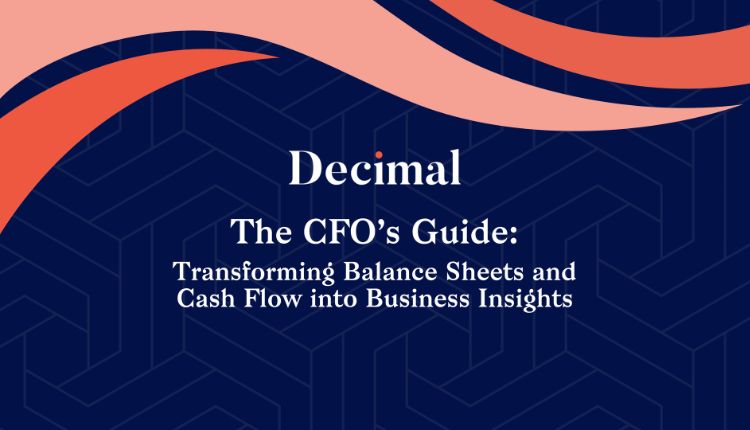A CFO’s job used to revolve around clean books and regulatory filings. That has changed.
Finance heads today are expected to shape growth strategies, defend forecasts, and guide capital allocation. They’re in the room for M&A talks, investor calls, and pricing decisions. That level of decision-making demands one thing above all: reliable, real-time numbers.
This is why balance sheet management tools have become critical for modern finance teams. They offer visibility, consistency, and control that spreadsheets simply can’t sustain beyond a certain point.
Legacy Systems Are No Match for Real-Time Financial Demands
Spreadsheets and disconnected systems delay insights. CFOs can’t wait for the month-end close to detect problems.
- Working capital mismanagement
- Inconsistent intercompany eliminations
- Delayed adjustments to deferred revenues
Without instant access, small issues become expensive ones.
Why Balance Sheet Visibility Now Drives Competitive Advantage
When cash flow is tight and forecasts shift quickly, balance sheet clarity becomes a growth enabler.
- Confident equity planning
- Timely asset repositioning
- Early risk identification
CFOs who see what’s coming can act early. The rest explain what went wrong.
What Balance Sheet Management Tools Actually Do (Beyond Reporting)
Many still think these tools just replicate static balance sheet templates. That’s far from true.
They provide:
- Real-time control over assets, liabilities, and equity
- Granular audit trails for every entry
- Automation across routine processes
Instant Access to Cash, Equity, and Liability Positions
Every transaction updates the ledger immediately. CFOs get current snapshots of:
- Short-term liabilities
- FX positions
- Retained earnings movement
No digging through aging sheets. Just one source of truth.
Automated Roll-Forwards and Adjustment Logs
Roll-forwards reconcile account movements over periods. These tools automate them.
- Auto-generated schedules
- Reclassification tracking
- Clear explanations for balance shifts
Perfect for audits, due diligence, or board decks.
Centralized Control Over Intercompany Transactions
No more reconciling emails or side sheets. The tools:
- Log transactions across entities
- Flag mismatches instantly
- Sync FX and tax treatments
It reduces close cycles and improves cross-team coordination.
How CFOs Use These Tools to Drive Smarter Decision-Making
Today, finance leads are expected to predict and steer, not just explain.
Balance sheet tools help them:
- Model scenarios based on current positions
- Monitor liquidity in real time
- Prepare for capital events with confidence
This creates a proactive finance function—capable of driving discussions on growth, M&A, and risk rather than reacting after the fact.
Dynamic Working Capital Forecasting
Tools monitor and forecast:
- AR/AP trends
- Inventory shifts
- Prepaid and deferred movements
This enables more accurate cash flow planning. Teams don’t need to guess liquidity based on stale reports—they can plan with up-to-the-minute data.
Stress Testing Liquidity with What-If Scenarios
Simulate:
- Interest rate hikes
- FX volatility
- Delayed receivables
CFOs can model risks before they hit. They can run downside scenarios to determine cash burn, working capital stretch, or impact on covenants.
Audit-Ready Books with Role-Based Access
Every adjustment is tracked. Roles are defined. Auditors see what they need—nothing more.
- No shadow versions
- No last-minute reconciliations
- No audit drama
Audits go faster. External reviews become painless. Financial reporting earns credibility.
Real Use Cases Where Balance Sheet Management Tools Made an Impact
Finance teams across industries are transforming operations with these tools.
Shortening the Month-End Close by 40–50%
Manual reconciliations and cross-checks slow the close. Automation cuts the time drastically:
- Scheduled journal entries
- Automated intercompany elimination
- Prebuilt reporting templates
This lets teams shift from “closing the books” to “analyzing the books” much sooner.
Real-Time FX Impact Calculation for Global CFOs
Multi-entity CFOs use these tools to:
- Track currency exposure
- Apply consistent revaluation methods
- Simulate hedging outcomes
No more surprises when currencies move. Exposure is flagged early, and mitigation strategies are grounded in data.
Automating Compliance Reporting for Regulated Industries
Industries like healthcare, insurance, and financial services rely on:
- Custom validation rules
- Real-time audit flags
- Country-specific compliance templates
It keeps them ahead of the regulator, not behind. Compliance becomes a by-product of process—not a separate project.
What Features CFOs Actually Use (and Which Are Overhyped)
Not every dashboard or KPI is useful. The best tools focus on:
- Accuracy
- Speed
- Auditability
Real features solve real problems. Everything else is clutter.
Essential Features: Consolidation, Locking, and Drill-Down Views
CFOs repeatedly use:
- Entity-wise locking for close periods
- One-click drilldowns from totals to transactions
- Consolidated multi-entity, multi-currency views
These features reduce reporting friction. They keep recurring workflows fast, traceable, and consistent across stakeholders.
Often Ignored: Deferred Revenue Tracking and Contingent Liability Mapping
The finance team’s hidden headaches:
- Deferred revenue tracking for SaaS and services
- Contingent liability mapping for lawsuits or guarantees
These tools handle them better than spreadsheets ever could. They bring visibility to obligations that are often forgotten until it’s too late.
Building Financial Agility: Why Balance Sheet Tools Are More Than Just Tech
This is about more than automation. It’s about a culture shift.
CFOs and controllers move from back-office roles to front-line advisors. That shift requires visibility, speed, and trust in data.
CFOs as Strategic Operators, Not Just Financial Historians
Modern CFOs:
- Run scenario analysis with the CEO
- Support pricing or investment strategies
- Present confident numbers to the board
None of this works with outdated books. To lead, finance must be able to speak with certainty.
Empowering Teams with Role-Based Transparency
Finance teams collaborate better when:
- Roles are defined
- Views are tailored
- Logs are traceable
It builds trust across departments. Cross-functional teams are more aligned when the numbers speak clearly and everyone knows what to expect.
Choosing the Right Tool: Questions CFOs Must Ask Before Investing
Not all balance sheet management tools are built the same.
Ask these questions:
- Does it connect to your GL, ERP, and reporting tools?
- Does it handle your entity, tax, and currency structures?
- Can it scale with growth, acquisitions, or IPO prep?
These aren’t features—they’re future-proofing checks.
Checklist for Evaluating a Balance Sheet Management Tool
| Criteria | What to Look For |
| Integration | Native sync with ERP, GL, FP&A tools |
| Security | Role-based access, audit logs, backups |
| Reporting | Custom templates, consolidation, drilldowns |
| Flexibility | Custom fields, business rules, workflows |
| Support | Training, onboarding, U.S.-based support |
Hidden Costs: Implementation, Training, or Feature Limitations
Beware of:
- Long setup cycles
- Limited user seats
- Locked features behind paywalls
Check what’s truly included in your license before signing.
Conclusion: Why Balance Sheet Tools Are the New CFO Standard
You can’t run a modern finance function on gut feel and spreadsheets.
Balance sheet management tools give CFOs what they need:
- Real-time access
- Reliable forecasts
- Audit confidence
For finance leaders responsible for strategic decisions, these tools aren’t optional anymore. They’re foundational. CFOs are now dealing with more than just back-office math—they’re facing strategic inflection points, economic volatility, and investor scrutiny that demand accurate, real-time financial intelligence.
Without a dependable system to manage balance sheet health, financial teams are stuck explaining misses instead of anticipating them.
These tools bring more than just reporting—they bring speed, clarity, and the ability to steer outcomes with conviction. They turn the balance sheet from a static snapshot into a living, breathing control panel for strategy.






